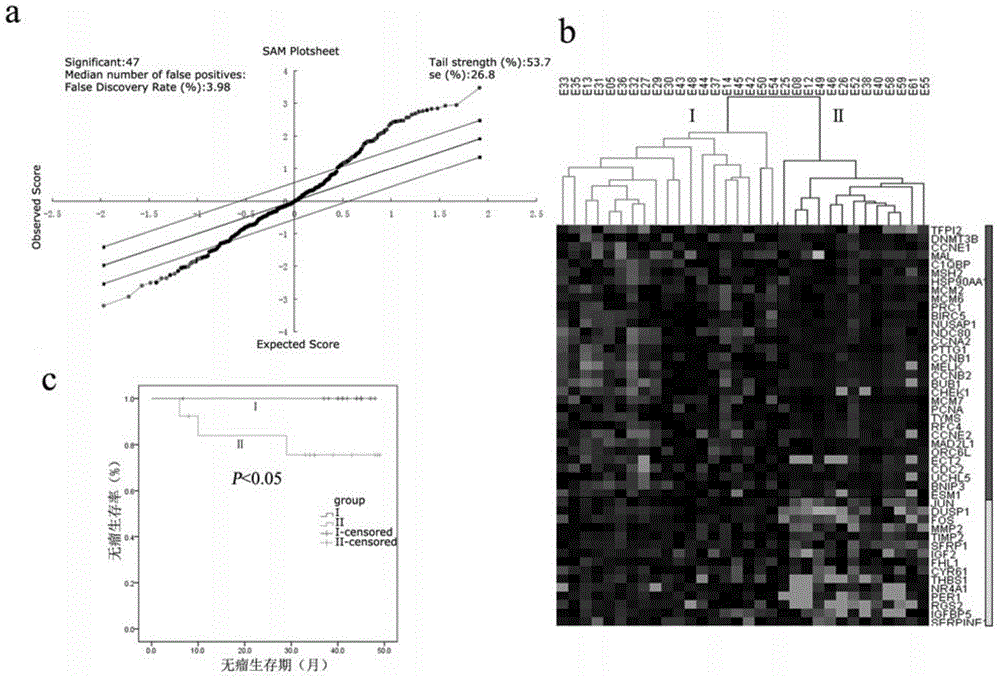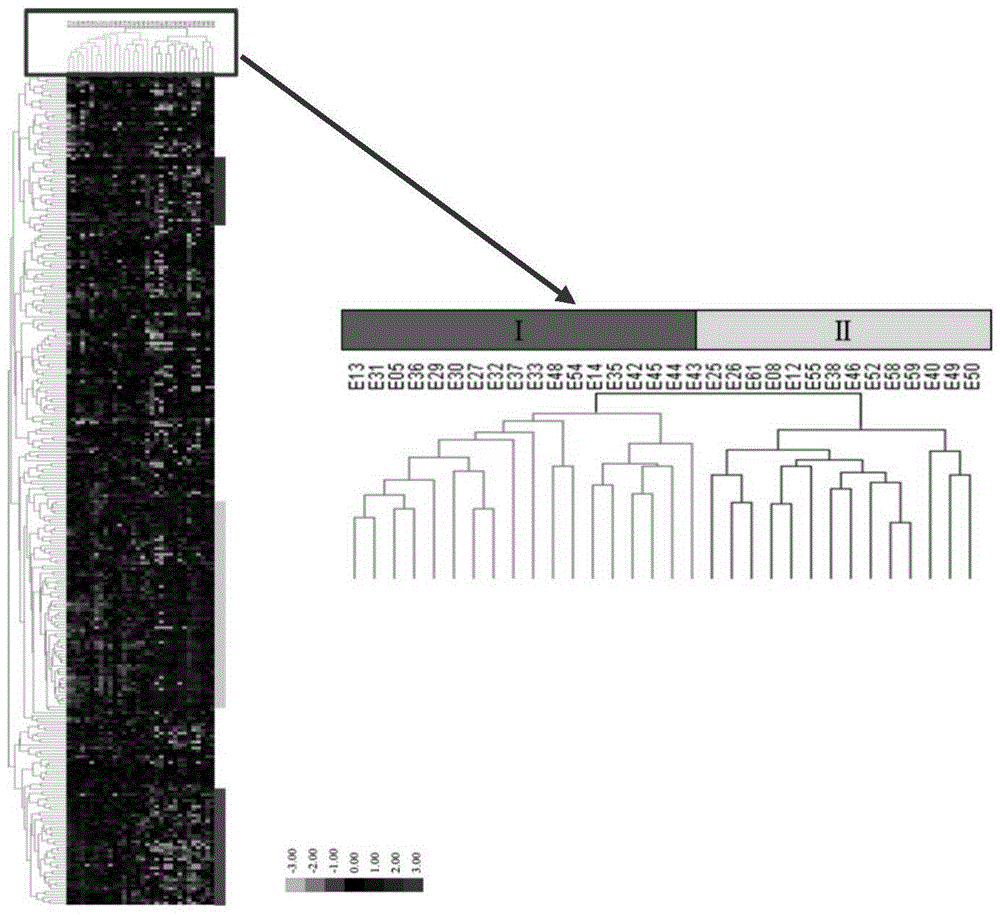Endometrioid adenocarcinoma prognosis-related gene and protein as well as application thereof
A technology for endometrium and adenocarcinoma, applied in the field of biomedicine, can solve problems such as inability to judge prognosis and meet the needs of diagnosis and treatment
- Summary
- Abstract
- Description
- Claims
- Application Information
AI Technical Summary
Problems solved by technology
Method used
Image
Examples
Embodiment 2
[0094] Example 2. Analysis of clinicopathological factors related to prognosis of large samples of endometrioid adenocarcinoma and screening of related prognostic genes
[0095] 1. Analysis of prognostic factors related to endometrioid adenocarcinoma
[0096] DFS statistics were performed on 93 patients with endometrioid adenocarcinoma who were followed up from 2006 to 2008. The Kaplan-Meier method was used to perform univariate survival analysis of each index in clinicopathological factors. As a result, the 6 indexes in each clinicopathological factor have statistically significant effects on the DFS of endometrioid adenocarcinoma (P <0.01), respectively: FIGO staging, histological grade, depth of muscle invasion, lymph node metastasis and ER and PR expression.
[0097] Bringing various meaningful indicators into the COX regression analysis, the results of the two indicators are statistically significant (P <0.01), that is, histological grade and PR expression. It shows that histol...
Embodiment 3
[0110] Example 3. Preliminary analysis of high-risk early warning genes for prognosis of endometrioid adenocarcinoma
[0111] The 21 differentially expressed genes in the "group 2 prognostic-related candidate genes" screened by supervised clustering were compared with the 47 differentially expressed genes in the "group 1 prognostic-related candidate genes" screened out by unsupervised clustering. A one-to-one comparison, it was found that the 21 overlapping differentially expressed genes in the “Group 2” were all covered by the 47 differential genes in the “Group 1”. The basic information of the 21 genes is shown in Table 5.
[0112] Using the 21 genes to perform unsupervised clustering of 32 cases of endometrioid adenocarcinoma, the results showed that the 32 cases of samples were clustered into two types A and B, such as image 3 shown in a. Groups A and B cover 19 and 13 samples respectively. Compared with the samples contained in the two groups I and II formed by the clusterin...
Embodiment 4
[0120] Example 4. Functional annotation of 21 genes
[0121] 1. GO analysis of 21 genes
[0122] Log in to MASV4.0 online, import the names of these 21 overlapping differentially expressed genes into the analysis window, and get GO annotations and GO classification statistics (such as Figure 4 ). In the first level, biological processes accounted for the largest proportion, about 54.37%, molecular functions accounted for 28.13%, and cellular components accounted for 17.50%. The second level is the sublevel of the first level three-level classification, and the categories are more detailed and diverse. Table 6 below lists the 10 biological processes most related to the 21 differential genes, mainly the cell cycle and cell related to the regulation of cell proliferation. Division and DNA replication, etc.
[0123] Table 6 The 10 most relevant GO-biological processes of differentially expressed genes
[0124]
[0125]
[0126] 2. 21 Gene Passway Analysis
[0127] Introducing 21 differe...
PUM
 Login to View More
Login to View More Abstract
Description
Claims
Application Information
 Login to View More
Login to View More - R&D
- Intellectual Property
- Life Sciences
- Materials
- Tech Scout
- Unparalleled Data Quality
- Higher Quality Content
- 60% Fewer Hallucinations
Browse by: Latest US Patents, China's latest patents, Technical Efficacy Thesaurus, Application Domain, Technology Topic, Popular Technical Reports.
© 2025 PatSnap. All rights reserved.Legal|Privacy policy|Modern Slavery Act Transparency Statement|Sitemap|About US| Contact US: help@patsnap.com



